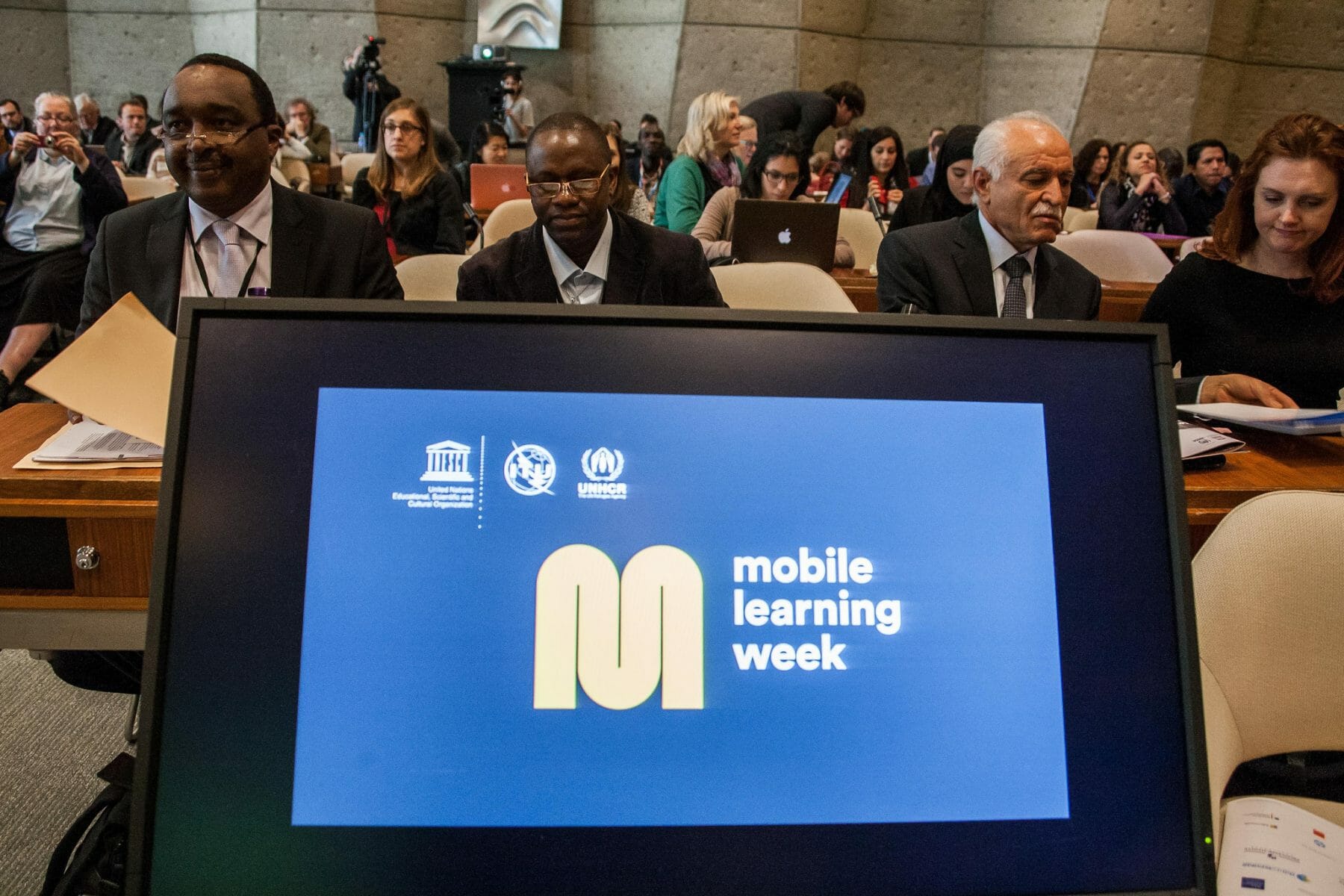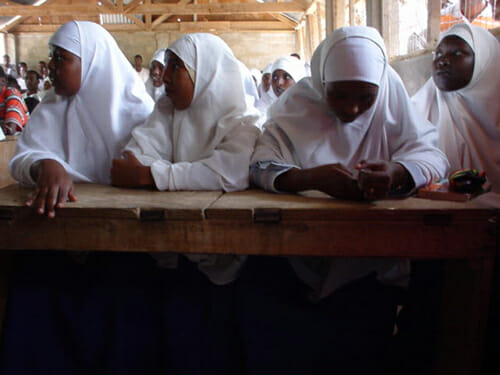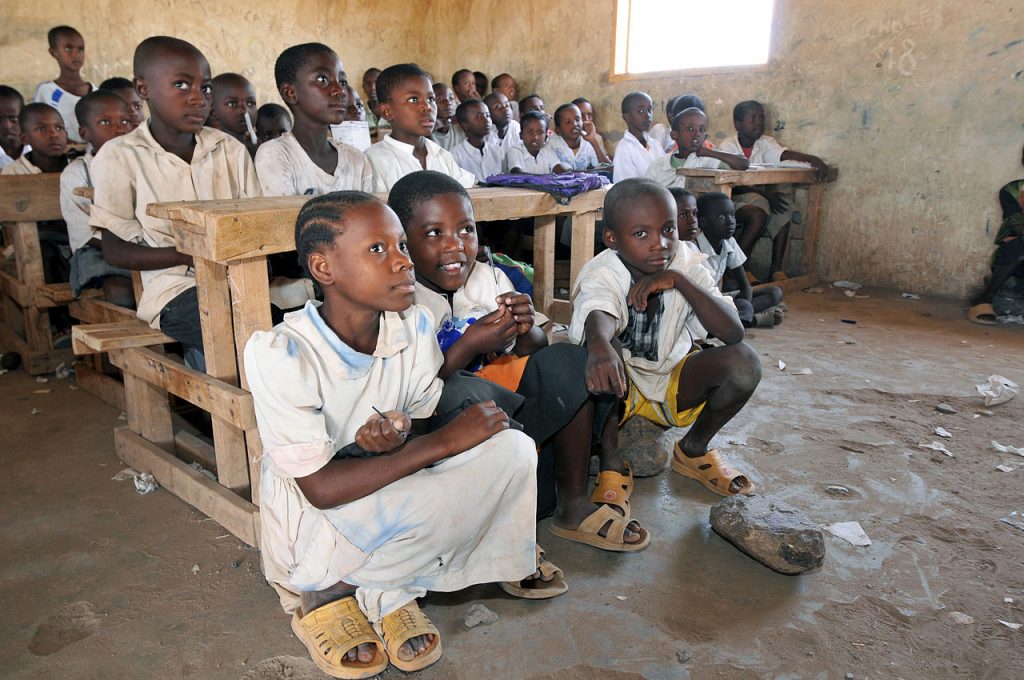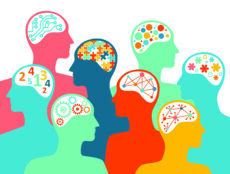
Editor’s Picks
UNESCO Report Details the Challenges of Educating Refugee Communities and How Mobile Learning Can Help
By Henry Kronk
April 08, 2018
UNESCO Mobile Learning Week 2017. Source: ITU Pictures, Flickr.
At the end of March, UNESCO conducted their annual Mobile Learning Week. The event is the organization’s flagship ICT conference. Their theme this year was “Skills for a connected world.” The conference included a wide variety of presentations and symposiums that went far beyond mobile learning. In tandem with the event, UNESCO released its latest report which focused specifically on the role mobile learning can play in refugee communities. “A Lifeline to Learning: Leveraging Mobile Technology to Support Refugee Education” compiled all available research on the subject and looked into several ongoing initiatives.
It goes without saying that education cannot be neglected for any person, full stop. A gap in a country’s education stands as one of the major secondary factors of war and conflict. If a large body of people go without a sufficient education, it only complicates and diminishes a country’s ability to recover. Despite this, education initiatives historically receive scant resources from humanitarian aid. In 2013, according to the UNESCO report, only 2% of the worldwide aid budget went to education.
Mobile devices are widely sought out in refugee communities for several reasons. UNESCO authors found that 39% of refugee households own at least one phone with internet capabilities. Another 32% own at least one basic phone. Educators have already begun to implement mobile technology as an aid in the classroom. In many situations, it has had a dramatic effect on the educational process.
It might be unrealistic for many to read the full 95 page UNESCO study cover to cover, so we have condensed a few interesting and/or instructive takeaways below.
Takeaways from the UNESCO Report

To begin, the last time there were this many people displaced by war, violence, or persecution was at the end of World War II. There are currently 65 million people forcibly displaced, and the number of those who have left their home country for other reasons—such as improving their socioeconomic situations—is even higher. Between 40% and 50% of these are children.
What’s more, the average time spent in exile is increasing. In 1993, refugees spent an average of nine years before they either returned home or were granted asylum in another country. Today, that average timespan is twenty years. As the authors note, “This time span, which is longer than an entire formal education cycle and can cover large parts of a person’s working life, clearly underlines the shortsightedness of all provisional solutions or quick fixes.”
Educators Teaching Refugees Face Unique Challenges
The simplest and of these challenges is the sheer scarcity of educators. A previous UNHCR Education Strategy recommended that one teacher should instruct, at the very most, 40 students per class. Many of the mobile learning initiatives explored in the study have been carried out in classrooms where the teacher-student ratio stands at 1:100 or higher. The authors write, “With a global rise of 30 per cent in 2014 only, the increasing number of school-age refugees further exacerbates the issue of availability of qualified teachers. It is estimated that at least 20,000 additional teachers and 12,000 additional classrooms would be needed on a yearly basis.” What’s more, a wide variety of factors make it more difficult to teach a class of refugees than one comprised of patriated students.
Mobile Technology Tends to Help in Very Simple Ways

Refugee communities tend to be hectic. People are constantly arriving and moving about, seeking access to government services, healthcare, food, and employment. Still, a large majority of refugees have access to mobile technology, which is crucial for community organizing. What’s more, establishing trust between government organizations and displaced people can be difficult.
“In dynamic contexts, such as upon arrival and during resettlement,” the authors write, “refugees are not only overwhelmed with information but also skeptical of official institutions, as in their home countries these can be the main sources of repression and persecution. With its potential to forward and spread messages across trusted sources, digital and mobile social media channels can be leveraged to inform refugees of education-related opportunities and deliver digital learning and educational courses. Social media campaigns require collaboration with people trusted by refugees, including other refugees, volunteers, activists and NGOs on the ground. Mobile network operators and social media providers recommended by trusted acquaintances and networks are the critical partners to reach refugees.”
Examples of Mobile Technology in the Classroom
Little academic research exists on the efficacy of using mobile technology to supplement education in refugee communities. But there’s no lack of examples. While a classroom in a developed country might use mobile technology to explore 3D animation with augmented reality or discover historical sites with VR, many refugee educators use their devices more for connecting via SMS or blended learning.
According to the UNESCO authors, “The Teachers for Teachers project in Kenya incorporates a rich professional teacher development approach with a mobile mentoring element. After onsite training, and in addition to a face-to-face coaching component, mobile instant messaging is used to facilitate continuous learning and ongoing support. The project operates in the Kenyan refugee camp of Kakuma, where the student/teacher ratio is about 100:1. Less than one-third of the teachers are trained, and the great majority of them are refugees themselves. Many of them may not have benefited from systematic schooling, and some struggle with psychosocial and emotional issues stemming from their experiences as refugees (Mendenhall, 2017; Teachers College, n.d.).”
“The Borderless Higher Education for Refugees (BHER) project provides teacher training to qualify untrained teachers in the Kenyan refugee camps of Dadaab. While the main lecturing component takes place onsite, students can use tablets to access a learning management system that features textbooks, videos and articles.”
“Similarly, the Connect to Learn (CTL) programme enables Syrian teachers in Iraq’s Domiz refugee camp to access digital resources via a cloud-based server. The content focuses on social-emotional skills, literacy and numeracy, and teachers can also use the technology to share their experiences with peers across the different camp schools (Dahya, 2016). Teacher training programmes have also started to leverage blended learning through massive open online courses, known as MOOCs. Examples of online teacher training are Edraak (‘realization’ in Arabic), an Arabic-language MOOC platform implemented by the Queen Rania Foundation, or the Jesuit Worldwide Learning (JWL) teacher training programme (Gladwell et al., 2016a).”









No Comments